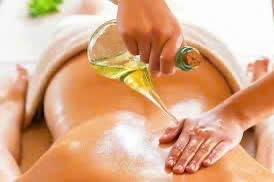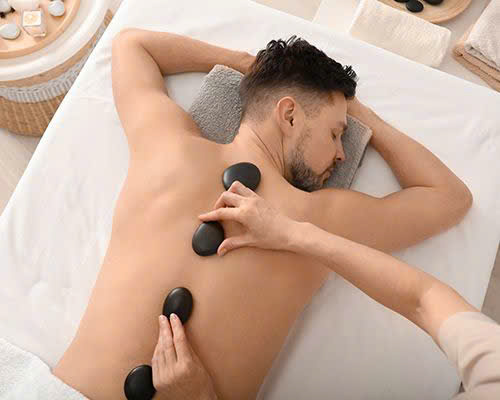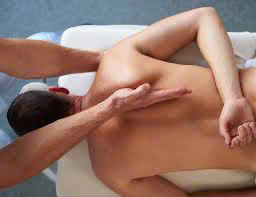Why Choose Therapy Massage for Pain Relief and Wellness
In our fast-paced, stress-laden world, the pursuit of physical well-being and mental relaxation has become a necessity rather than a luxury. One increasingly popular avenue to achieve this holistic health is through therapy massage. It’s more than just a pampering session; it’s a scientifically backed method designed to promote healing, alleviate pain, and enhance overall wellness. If you’re curious about what therapy massage entails, its benefits, or why it might be the best choice for your health needs, you’re in the right place. This comprehensive guide explores all facets of therapy massage, helping you understand its value and how it can be an integral part of your wellness journey.

Therapy massage
Therapy massage is a specialized form of massage therapy aimed at addressing specific physical issues, injuries, or chronic conditions. Unlike traditional relaxing massages that focus primarily on comfort and stress relief, therapy massage targets deeper layers of muscle tissue, tendons, and connective tissues to facilitate healing, improve mobility, and reduce pain.
This type of massage involves various techniques tailored to individual needs, often combined with stretches, joint mobilizations, and even some physical therapy practices. It is typically performed by licensed therapists who have extensive training in anatomy, physiology, and specific therapeutic modalities. The core principle of therapy massage is to identify problem areas through assessment and then apply targeted interventions to resolve issues effectively.
Many individuals seek therapy massage as part of their treatment plan for muscular strains, sports injuries, postural problems, or chronic pain syndromes such as fibromyalgia and arthritis. Its effectiveness derives from its focus on the underlying causes of discomfort, rather than just alleviating surface symptoms. As awareness of holistic health continues to grow, therapy massage is increasingly recognized as a vital component of integrative healthcare.
What is the therapy massage
Understanding what is the therapy massage involves exploring the techniques, objectives, and approach used during sessions. Broadly, therapy massage encompasses several types of massage modalities, including deep tissue massage, myofascial release, trigger point therapy, lymphatic drainage, and neuromuscular therapy, among others.
Deep Tissue Massage and Its Role

Deep tissue massage emphasizes reaching the deeper muscle layers and fascia. It involves slow, focused strokes, finger pressure, and sometimes elbow work to break down adhesions and knots that restrict movement and cause pain. This technique is highly effective for chronic muscle tension, sports-related injuries, or postural misalignments.
Myofascial Release and Trigger Point Therapy
What is the therapy massage if it includes techniques like myofascial release? This approach involves gentle, sustained pressure on the fascia—the connective tissue surrounding muscles—to release restrictions. Trigger point therapy, on the other hand, targets specific painful points within muscles to deactivate hyperirritable spots, leading to relief from referred pain and improved muscular function.
Customized Treatment Plans
A defining feature of therapy massage is its personalized nature. A therapist begins with an assessment of the client’s condition, history, and goals, then designs a tailored treatment plan. This customization ensures that what is the therapy massage varies from person to person, optimizing results and safety.
Integration with Other Modalities
In many cases, therapy massage may be combined with physical therapy, chiropractic care, or acupuncture to enhance outcomes. The therapist’s role extends beyond manual manipulation—they often advise on exercises, posture correction, and lifestyle modifications, making therapy massage a comprehensive approach to health.
Scientific Backing
Research consistently supports what is the therapy massage as an effective intervention for pain management, improved flexibility, and reduced inflammation. It is recognized by medical professionals as a viable adjunct to conventional treatments, especially for musculoskeletal conditions.
Top benefits of therapy massage
The top benefits of therapy massage go far beyond simple relaxation. While it indeed promotes mental calmness, its physical benefits are profound and scientifically validated. Engaging in regular therapy massage can dramatically improve quality of life, especially for those suffering from chronic or acute pain.
1. Effective Pain Relief
One of the most compelling top benefits of therapy massage is its ability to reduce pain. Whether from injury, overuse, or degenerative conditions, targeted massage techniques help diminish inflammation, relax tense muscles, and alleviate nerve compression. Studies show that therapy massage can lower levels of pain mediators in tissues, providing lasting relief without medication.
2. Improved Circulation and Lymphatic Flow
Therapy massage stimulates blood flow, which enhances oxygen and nutrient delivery to tissues and accelerates waste removal. This process facilitates faster healing and reduces swelling. It also boosts lymphatic drainage, helping eliminate toxins and strengthen immune function.
3. Enhanced Flexibility and Range of Motion
Chronic muscle tightness and adhesions often restrict movement. Regular therapy massage helps loosen stiff muscles and breaking down scar tissue. This results in better flexibility, improved posture, and greater joint mobility—fundamental factors in preventing future injuries and maintaining functional independence.
4. Stress Reduction and Mental Clarity
Although technically a physical therapy, therapy massage triggers the release of endorphins and serotonin—natural mood enhancers. It also reduces cortisol levels, lowering stress hormones. As a result, clients often experience mental clarity, emotional balance, and better sleep quality after sessions.

5. Support for Post-Surgical and Injury Recovery
Top benefits of therapy massage include its role in post-operative recovery. It can decrease scarring, improve circulation to healing tissues, and prevent adhesions. Athletes and active individuals particularly benefit from pre- and post-event treatments to optimize performance and recovery.
6. Better Posture and Alignment
Muscle imbalances and structural misalignments are common contributors to chronic pain. Through targeted manipulation and corrective exercises, therapy massage helps restore proper alignment, reducing strain on joints and muscles. This ongoing benefit can prevent the development of further issues.
7. Improved Sleep Quality
The calming effects of therapy massage extend into sleep hygiene. By reducing pain and promoting relaxation, it helps regulate sleep patterns—especially beneficial for those with insomnia or stress-related sleep disturbances.
8. Holistic Approach to Wellness
Beyond treating specific ailments, therapy massage fosters a broader sense of well-being. It encourages mindfulness, body awareness, and self-care practices, creating a proactive approach to maintaining health.
Why therapy massage is the best choice for reduce pain
Pain management is a complex challenge, often requiring multifaceted approaches. it lies in its ability to address root causes, promote natural healing, and minimize dependence on pharmaceuticals.
Targeted and Personalized Treatments
Unlike generic pain management strategies, is tailored to each individual’s unique condition. Therapists perform detailed assessments to understand the source of pain—whether it’s muscular, neurological, or structural—and customize techniques accordingly, ensuring the most effective intervention.
Non-Invasive and Drug-Free
For those wary of medications or invasive procedures, therapy massage offers a safe alternative. It avoids side effects associated with drugs, injections, or surgeries while delivering tangible pain relief. This makes it suitable for long-term management of chronic conditions and for those seeking holistic therapies.
Stimulating Circulatory and Nervous System Responses
By improving blood flow and modulating nervous system activity, encourages the body’s innate ability to heal itself. It reduces muscle tension that often perpetuates pain cycles and helps normalize nerve conduction, easing symptoms of neuropathic pain and radiculopathy.
Complementary to Medical Treatments
Why therapy massage is increasingly regarded as an essential complement rather than a replacement to conventional medicine. It can enhance the efficacy of pharmacological treatments, reduce their required dosage, and speed up recovery time. This integrated approach provides comprehensive pain management.
Psychological Benefits and Pain Perception
Pain is not solely physical; psychological factors significantly influence pain perception. reduces anxiety, depression, and stress—elements that can heighten pain sensitivity. By fostering relaxation and emotional stability, it diminishes the overall pain experience.
Long-Term Benefits and Prevention
Regular sessions prevent the recurrence of pain by maintaining muscular health and proper alignment. Addressing tension early on reduces the risk of chronic issues developing, making therapy massage a proactive tool in pain prevention.

What is the difference between therapy massage with relax massage
While both massage involve manual manipulation of soft tissues, they serve distinctly different purposes and employ different techniques. Understanding what is the difference helps clients choose the right approach based on their needs.
Goals and Focus
Relax massage primarily aims to provide comfort, reduce stress, and promote mental relaxation. It is characterized by gentle, soothing strokes, light pressure, and a calming environment. Conversely, therapy massage concentrates on diagnosing and treating specific physical issues, often involving deeper, more targeted techniques aimed at resolving structural problems.
Technique and Intensity
Relax massage uses superficial strokes, effleurage, and gentle kneading. The pressure is moderate to light, focusing on creating a sensation of calm and tranquility. In contrast, therapy massage involves deeper, more assertive maneuvers such as deep tissue work, trigger point release, and myofascial techniques. The intensity is calibrated to address underlying muscular restrictions.
Duration and Sessions
Relax massages tend to be shorter, typically ranging from 30 to 60 minutes, emphasizing immediate relaxation. sessions may last longer, often 60 minutes or more, to allow thorough evaluation and targeted treatment of problem areas.
Client Expectations and Outcomes
Clients seeking relax massage usually want stress relief, mental clarity, and a break from daily tension. Those opting for therapy massage expect resolution of pain, improved mobility, and correction of biomechanical issues. Sometimes, a single session blends elements of both, but the primary intent remains the key differentiator.
Cost and Accessibility
Given its technical complexity, it may be priced higher due to the therapist’s expertise and extended treatment time. Relax massage is generally more accessible and widely available in spas and wellness centers.
Combining the Approaches
Many practitioners incorporate both relax massage and therapy massage in their practice, tailoring treatments to client preferences and needs. For example, a client may receive a relaxing massage for stress relief and a focused therapy massage for specific pain issues during the same visit.
Who can try therapy massage
it depends on individual health status, goal setting, and specific circumstances. It’s a versatile modality suitable for a wide range of people but also requires consideration of certain contraindications.
Athletes and Active Individuals
Athletes frequently use to enhance performance, prevent injuries, and recover quicker. It helps in loosening tight muscles before events and accelerates healing afterward, making it a crucial aspect of athletic training.
People with Musculoskeletal Conditions
Those suffering from chronic back pain, neck stiffness, joint issues, or repetitive strain injuries often find significant relief through this massage. It can target specific problem areas, correcting imbalances and improving overall function.
Post-Surgical Patients
With medical clearance, post-surgical patients may undergo to decrease scar tissue formation, improve circulation, and facilitate healing. It’s important that such treatments are coordinated with healthcare providers to avoid any complications.
Stress and Anxiety sufferers
While primarily physical, who can try therapy massage extends to anyone under high stress, anxiety, or experiencing sleep disturbances. The relaxation response invoked during therapy sessions can have profound mental health benefits.
Older Adults
Older adults often face mobility issues and chronic pain. it can improve circulation, ease joint stiffness, and promote relaxation. However, therapists must adapt techniques considering age-related sensitivities and health conditions.
Pregnant Women
Pre-natal therapy massage (a specialized subset) is safe for most pregnant women, offering relief from back pain, edema, and stress. Professional therapists trained in prenatal massage ensure safety for both mother and baby.
Caution and Medical Consultation
Who can try therapy massage should always consult with healthcare providers if they have severe medical conditions like blood clots, infections, or open wounds. Pregnant women and individuals with cardiovascular issues should seek therapists trained specifically in relevant techniques.
What note when try therapy massage
Before embarking on what note , it’s vital to prepare and communicate effectively with your therapist. Well-informed clients derive the most benefit and ensure safety throughout the treatment.
Communicate Your Medical History
Be transparent about any medical conditions, allergies, medications, or recent surgeries. This information guides the therapist in selecting appropriate techniques and pressure levels, reducing risks.
Set Clear Goals and Expectations
Know what you aim to achieve—be it pain relief, increased mobility, or relaxation. Communicating these goals ensures the therapist tailors the session to meet your needs effectively.
Discuss Comfort Levels
During what note when try , voice any discomfort or pain during the session. Therapists appreciate feedback and will adjust pressure or techniques as needed.
Hydrate and Rest
Hydration before and after massage enhances detoxification and tissue healing. Also, ensure adequate rest post-session to maximize benefits and reduce post-treatment soreness.
Follow Therapist Recommendations
Post-massage advice, such as stretching, hydration, or activity modifications, can prolong and amplify the benefits. Respect your therapist’s guidance for optimal results.
Be Mindful if you have a fever, contagious illness, or skin infections. Inform the therapist if you are pregnant or have specific health concerns to determine appropriateness.https://maps.app.goo.gl/2gfYPJNYythhZesU6?g_st=com.google.maps.preview.copy
Conclusion
Choosing therapy massage offers a powerful, non-invasive path toward pain relief and holistic wellness. Its personalized, targeted approach addresses the root causes of discomfort, improves circulation, enhances mobility, and promotes mental serenity. Understanding what is the therapy massage, recognizing the top benefits , and differentiating it from simple relaxation treatments empower individuals to make informed decisions for their health. Whether recovering from injury, managing chronic pain, or seeking stress reduction, why this massage is the best choice for reduce pain becomes evident through its scientifically supported efficacy and holistic philosophy. As with any therapeutic intervention, proper communication, professional guidance, and mindful participation are essential. Embracing can truly transform your approach to health, paving the way for a more vibrant, pain-free life.https://jobedubaispa.com/swedish-massage-2/
